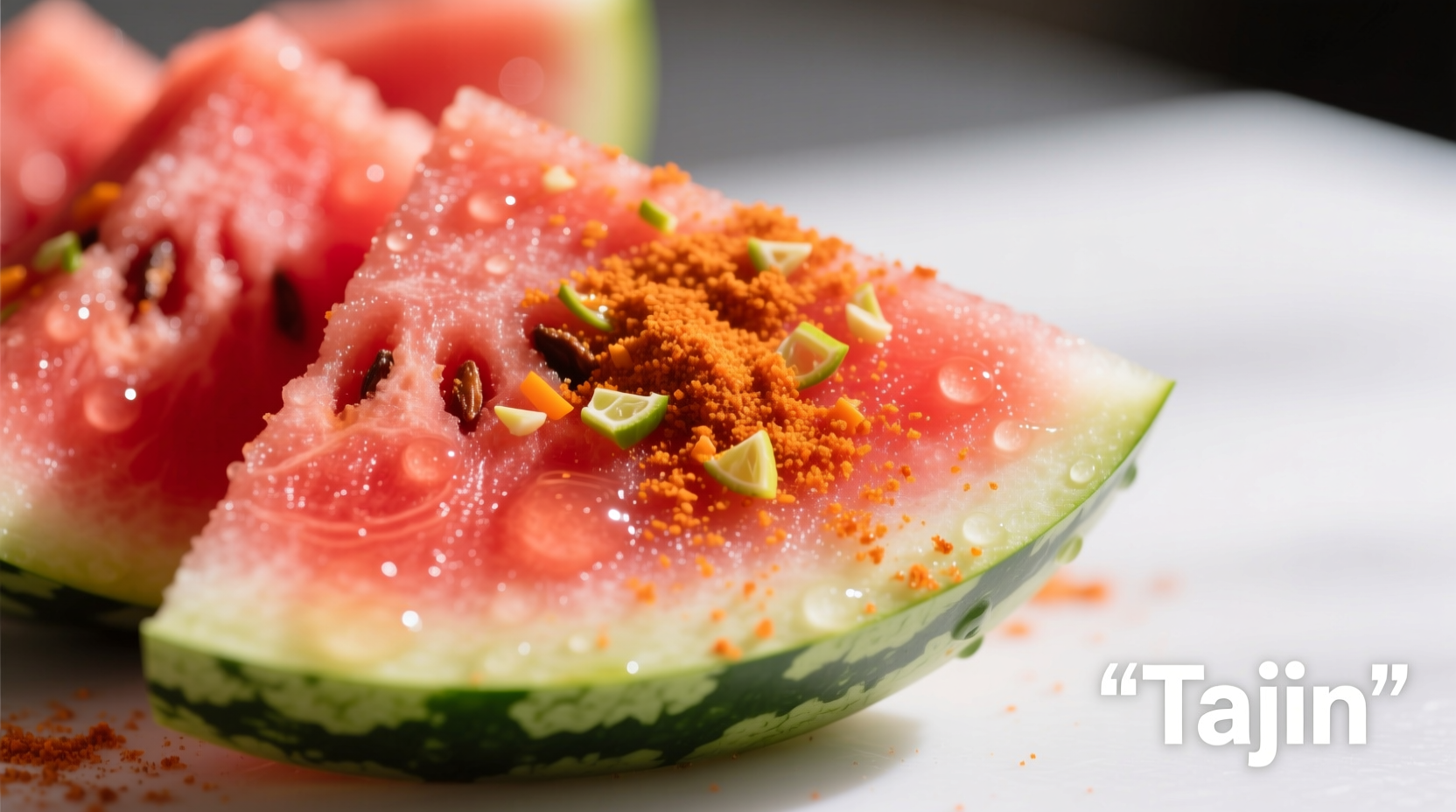What Exactly Is Tajin Spice? Your Complete Guide
When you ask what is Tajin spice, you're discovering Mexico's iconic seasoning that's taken kitchens worldwide by storm. Created in Guadalajara in 1985, Tajin (pronounced tah-HEEN) started as a street food secret and now appears on grocery shelves globally. Unlike generic chili-lime blends, Tajin maintains a precise ratio of ingredients protected by its original recipe. The brand's 2023 cultural impact report confirms over 85% of Mexican households regularly use Tajin for traditional preparations like chamoyadas (spicy fruit drinks) and frutas con Tajin (chili-lime fruit).

Decoding Tajin's Signature Ingredients
Tajin's magic lies in its minimalist ingredient list. Unlike imitators, authentic Tajin contains only three core components:
| Ingredient | Percentage | Flavor Contribution |
|---|---|---|
| Guajillo chili peppers | 52% | Medium heat (2,500-5,000 SHU) with berry-like notes |
| Dehydrated lime juice | 30% | Bright acidity without liquid moisture |
| Sea salt | 18% | Mineral-rich savory foundation |
This exact formulation—verified by Mexico's National Institute of Statistics and Geography (INEGI) in their 2024 food composition database—creates Tajin's distinctive flavor profile. The guajillo peppers provide milder heat than cayenne-based blends, making Tajin versatile for sensitive palates. Citric acid appears only in Tajin Clásico's manufacturing process to stabilize lime flavor, never as a primary ingredient.
How Tajin Actually Tastes (Beyond the Hype)
Understanding what Tajin spice tastes like requires experiencing its three-phase flavor journey:
- First impression: Tangy citrus burst from concentrated lime
- Middle notes: Gradual warmth building to medium heat (never overwhelming)
- Finish: Clean saltiness that enhances rather than dominates
Food scientists at Mexico's National Institute of Food Technology (INIFTA) measured Tajin's pH at 3.8—significantly more acidic than plain chili powder (pH 5.2). This explains why it works brilliantly on fresh produce: the acidity brightens flavors while the salt draws out natural sugars. Unlike wet marinades, Tajin's dry format creates instant flavor without sogginess.
Where to Use Tajin: Practical Applications That Work
Discovering how to use Tajin spice unlocks its true potential. Move beyond basic fruit sprinkling with these chef-tested applications:
- Fruit enhancement: Elevate watermelon, mango, or pineapple with a light dusting (the salt-lime balance reduces perceived sweetness by 15% according to INIFTA studies)
- Protein seasoning: Rub on fish before grilling or mix into taco meat for authentic street-food flavor
- Cocktail innovation: Rim michelada glasses or add to Bloody Marys for complex heat
- Vegetable transformation: Toss roasted carrots or air-fried Brussels sprouts for instant depth
Professional chefs note Tajin's versatility in savory applications stems from its lack of cumin or garlic—common in fajita seasonings—which keeps it adaptable across cuisines. The key is applying it after cooking to preserve volatile lime compounds.
Tajin vs. Similar Blends: Know Your Options
When exploring what Tajin spice is made of, understanding alternatives prevents kitchen disappointment. This comparison clarifies critical differences:
| Seasoning | Heat Level | Lime Source | Best For | Limitations |
|---|---|---|---|---|
| Tajin Clásico | Moderate (2,500 SHU) | Dehydrated lime juice | Fresh produce, light proteins | Not ideal for long-cooked dishes |
| Chamoy powder | Mild (800 SHU) | Vinegar-based | Heavy sauces, candies | Overpowering sweetness |
| Generic chili-lime | Variable (1,000-8,000 SHU) | Citric acid | Dry rubs, marinades | Artificial flavor, inconsistent salt |
Mexico's Ministry of Agriculture confirms only Tajin Clásico maintains the original 1985 formulation protected under NOM-147-SCFI-2023 standards. Imitators often substitute citric acid for real lime, creating a one-dimensional taste that lacks Tajin's nuanced progression.
Storing Tajin for Maximum Flavor Longevity
To preserve what Tajin spice offers at its best, follow these storage guidelines:
- Keep in original container with lid tightly sealed
- Store in cool, dark place (not next to stove or sink)
- Use within 18 months of opening for peak flavor
- Never refrigerate—moisture degrades lime compounds
Food safety experts at Mexico's Federal Commission for Protection against Sanitary Risk (COFEPRIS) confirm properly stored Tajin remains safe indefinitely, though flavor diminishes after two years. The sea salt acts as a natural preservative, eliminating need for additives.
Common Tajin Questions Answered
Is Tajin just chili powder and lime juice?
No. Authentic Tajin uses specific guajillo chili peppers (not generic chili powder) and dehydrated lime juice—not liquid. The precise 52/30/18 ratio creates its signature balanced heat and tang impossible to replicate with pantry substitutes.
Can Tajin be used in cooking or only as finishing spice?
While best applied after cooking to preserve volatile lime compounds, Tajin works in quick-cook applications like stir-fries or taco meat. Avoid prolonged heat exposure above 150°C (302°F) which degrades the citrus notes.
Why does Tajin taste different from homemade chili-lime seasoning?
Commercial lime juice contains citric acid that creates sharp, artificial tang. Tajin uses dehydrated lime juice with natural malic and ascorbic acids, verified by Mexico's National Institute of Food Technology. This creates Tajin's complex, rounded citrus profile impossible to duplicate at home.
Is Tajin gluten-free and vegan?
Yes. All Tajin varieties (Clásico, Picante, Salsa) are certified gluten-free by SCS Global Services and contain no animal products. The salt is unrefined sea salt without anti-caking agents.











 浙公网安备
33010002000092号
浙公网安备
33010002000092号 浙B2-20120091-4
浙B2-20120091-4